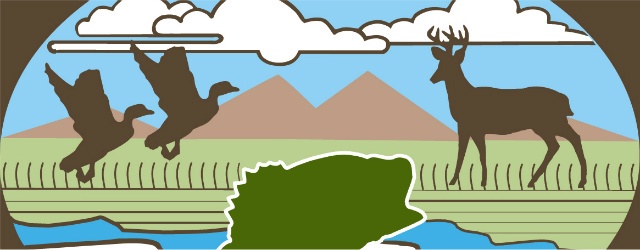Commissioners to vote on regulations to combat fatal deer disease
by June 20, 2016 3:58 pm 220 views

The Arkansas Game and Fish Commission will hold a special meeting June 24 to consider adopting regulations to combat a fatal disease that affected 23% of deer initially sampled.
Chronic wasting disease is a fatal neurologic disease with no known cure that affects members of the deer family – in Arkansas, white tail deer and elk. It is caused not by a bacteria or virus but by a protein known as a prion that is transmitted through deer urine, feces, saliva, blood and decaying carcasses. Prions don’t break down easily, even when exposed to extreme temperatures. An animal can be infected for years before symptoms present themselves.
The disease affects an important element of the state’s economy and culture. There are 500,000 licensed deer hunters in Arkansas, which doesn’t include children under age 16 who aren’t required to be licensed. According to AGFC, the state issued 21,515 nonresident big game hunting licenses to out-of-state hunters last year. More than 200,000 deer are harvested annually.
Brad Carner, AGFC chief of wildlife management, told legislators during a committee meeting Monday that there is no evidence that the disease can spread to humans or to other livestock. Carner said researchers have tried to infect livestock by injecting the disease into their nasal passages without success. Cory Gray, AGFC deer program coordinator, said that while scientific studies haven’t shown the disease poses a danger to humans, the Centers for Disease Control and the World Health Organization have advised against humans consuming positive-testing animals.
The presentation was made to the House and Senate State Agencies and Government Affairs Committees; the House and Senate Agriculture, Forestry and Economic Development Committees; and the Arkansas Legislative Council Game and Fish/State Police Committee.
While infected deer have been found only in the five-county area (Boone, Carroll, Madison, Newton and Pope counties), deer are mobile and could spread the disease to the rest of the state. The one affected deer found in Pope County was 45 miles south of the concentration of cases in northern Newton County.
Commissioners will meet June 24 to discuss potential regulations that would affect the five affected counties and five others: Marion, Searcy, Johnson, Logan and Yell. Among the proposals:
– To decrease deer density, AGFC would establish a 10-county management zone where landowners would be issued extra deer tags. Landowners would be required to submit samples of the deer they kill for testing. Deer and elk killed in the zone would be required to remain in the zone, except for deboned meat and other body parts, such as hides and taxidermy products.
– The feeding of wildlife within the zone would be prohibited with some exceptions, including baiting for deer on private land between Oct. 1 and Dec. 31.
– Bag limits would be increased and antler restrictions removed within the zone to encourage more hunting to thin the population.
– The use of scents and lures with natural deer urine would be prohibited. The majority of those products comes from 10 captive deer farms from northern states that have tested positive for the disease.
– Rehabilitation of deer statewide would be prohibited.
– An elk management zone would be created in the five affected counties where the elk quota would be increased, while hunters outside of the zone could kill one elk during deer season.
– A non-commercial hunting enclosure permit would be created for private landowners who build high fences that prevent deer movement. Landowners would be required to ensure those fences include openings that allow wildlife to move freely inside and outside the enclosure to prevent the creation of captive areas where deer can be more easily infected.
Some legislators, including Sen. Eddie Joe Williams, R-Cabot, expressed concern or opposition to the last proposal on property rights grounds.
Arkansas was the 24th state to discover its deer population has been affected by the disease when an infected elk was killed by a hunter Oct. 6 and then a doe appeared in Ponca 12 miles away that at first appeared healthy but died Feb. 2 and tested positive. At that point, the AGFC adopted a response plan that was approved in an emergency meeting Feb. 23. AGFC collected 266 deer that appeared to be healthy. Sixty-two of those, or 23%, tested positive – the highest initial amount in any state that has detected the disease.
AGFC then collected 1,300 road kill deer and apparently sick animals and detected the disease in Boone, Carroll, Madison, Newton and Pope counties. Among the findings: 12 of the 48 fawns had the disease. Other states have not found the disease in fawns to that degree. For example, when Wisconsin sampled more than 14,000 fawns, it found only 24.
Game and Fish has been discussing the issue with counterparts in other states who have been dealing with the disease. Cory Gray, AGFC deer program coordinator, said only New York and Illinois have had much success in slowing the disease, but Illinois’ infection rate was only 2%.
Jeff Crow, AGFC incoming director, said Arkansas is in for a long battle. AGFC is hoping to manage the disease because eradicating it will be impossible.
”We are committed to a long-term response,” he said. “This is not a short -term response to this disease. This will take decades.”
